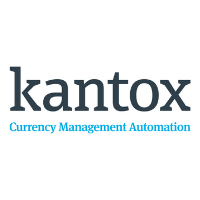How to use pricing to create an effective hedging program
12-12-2022 | treasuryXL | Kantox | LinkedIn |
In this article, we explore the links between pricing and creating an effective currency hedging strategy. We reveal how a simple PEG framework —Pricing, Exposure, Goals— can allow CFOs and treasurers to correctly define their FX goals, the type of exposure they need to collect and process, and the best hedging program for their business.
Pricing as a hedging mechanism
Transactional currency risk, it is often said, occurs between the moment an FX-denominated transaction is agreed upon and the moment it is settled in cash.
That’s OK, but what if the transaction was priced well before it was agreed, which is a realistic description of how things really work?
That’s why at Kantox, we developed the concept of pricing risk. pricing risk is the risk that between the moment an FX-driven price is set and the moment a transaction is agreed upon, a shift in the FX rate might impact budgeted profit margins.
Closely related to this is the idea that pricing is itself a hedging mechanism. Why? Because you can remove pricing risk by frequently updating your prices.
And that brings us to the topic of pricing parameters and hedging.
Dynamic pricing
Let us start with dynamic pricing. There is a growing list of industries where dynamic pricing is becoming the norm: travel, chemical traders, hospitality, railways, entertainment, insurance, online advertisement, retail and even shipping.
This trend reflects the fall in transaction costs made possible by the availability of real-time data and the rise of geolocation services and payment apps.
Meanwhile, algorithms take into account supply and demand conditions, competitor pricing and other variables.
Two things need to be considered when it comes to dynamic pricing:
(a) prices are ‘FX-driven’; that is, an FX rate is systematically part of the pricing formula;
(b) prices are frequently updated, therefore leveraging the full capacity of pricing to act as a hedging mechanism.
Other pricing models
Despite its growing popularity, dynamic pricing is not the only pricing mechanism out there. We can single out at least two other very significant models:
1. Steady prices for individual campaigns/periods. Some businesses, like catalogue-based tour operators, keep prices stable for an entire campaign/budget period and set new prices at the start of the following period. Things to consider here:
(a) Prices are also FX-driven, just like in dynamic pricing.
(b) The pricing impact of the ‘cliff’, or a sharp FX rate fluctuation between two campaign/budget periods, is fully passed on to customers at the onset of a new period. Here too, pricing acts as a hedging mechanism, but not to the extent it does in dynamic pricing.
2. Steady prices for a set of campaigns/periods. Some firms need or simply desire to keep prices steady not only for one individual campaign/budget period but for a set of campaign/budget periods linked together. Things to consider:
(a) Prices are not FX-driven: the FX rate plays no role in pricing;
(b) The pricing impact of the ‘cliff’ cannot be passed on to customers at the onset of a new period. Pricing, quite obviously, is not a hedging mechanism in this case.
Putting it all together: the PEG framework: Pricing-Exposure-Goals
The PEG or Pricing – Exposure – Goals framework provides actionable clarity when discussing pricing and currency hedging in the context of cash flow hedging programs:
For firms with frequently updated FX-driven prices, the goal is to protect the dynamic pricing rate in all their transactions. The exposure to hedge is the company’s firm sales/purchase orders. The right program is a micro-hedging program for firm commitments.
For companies that keep steady prices during individual campaign/budget periods, the goal is to protect the campaign/budget rate. The exposure to hedge is the forecasted revenues and expenditures for that particular campaign. The right program is a combination of a static hedging program, conditional orders and a micro-hedging program for firm commitments.
Finally, for firms that keep steady prices across a set of campaign/budget periods linked together, the goal is to smooth out the hedge rate over time. The exposure to hedge is a rolling forecast for a set of periods linked together. The right program is a layered hedging program.
Currency Management Automation solutions allow you to reach all your goals, whatever the pricing parameters of your business.










